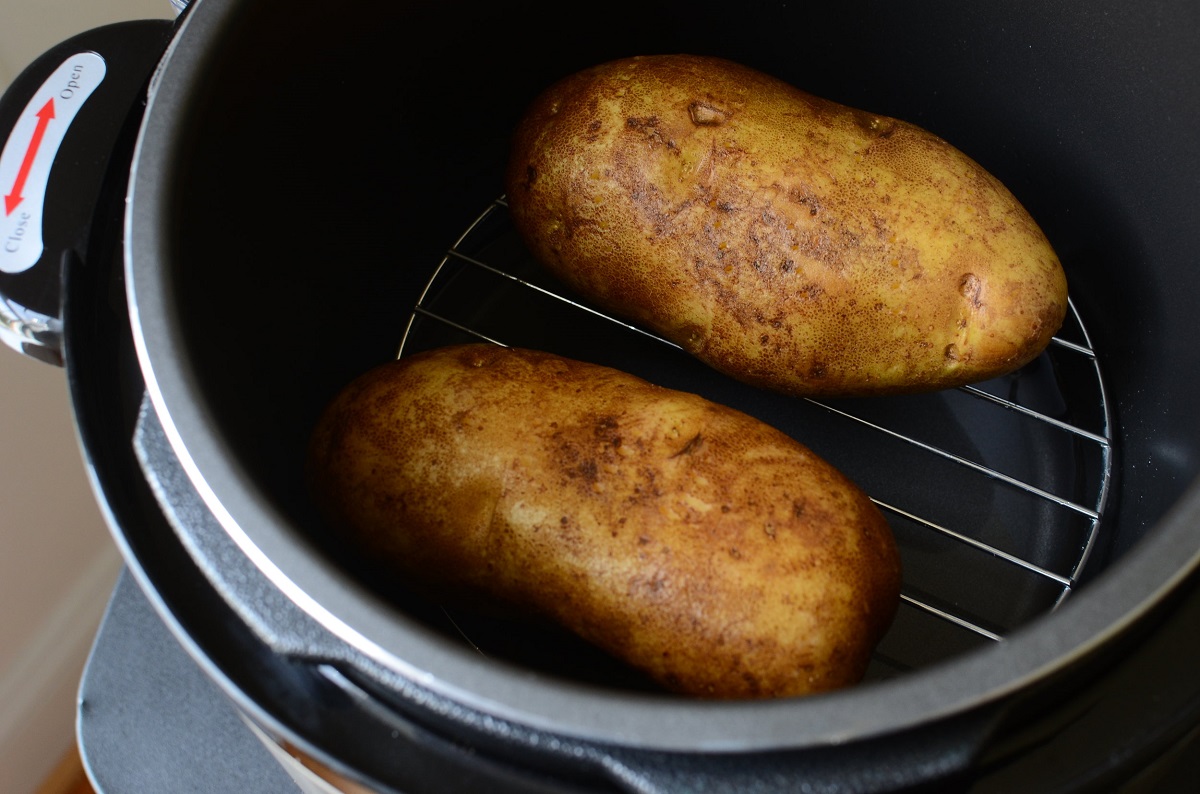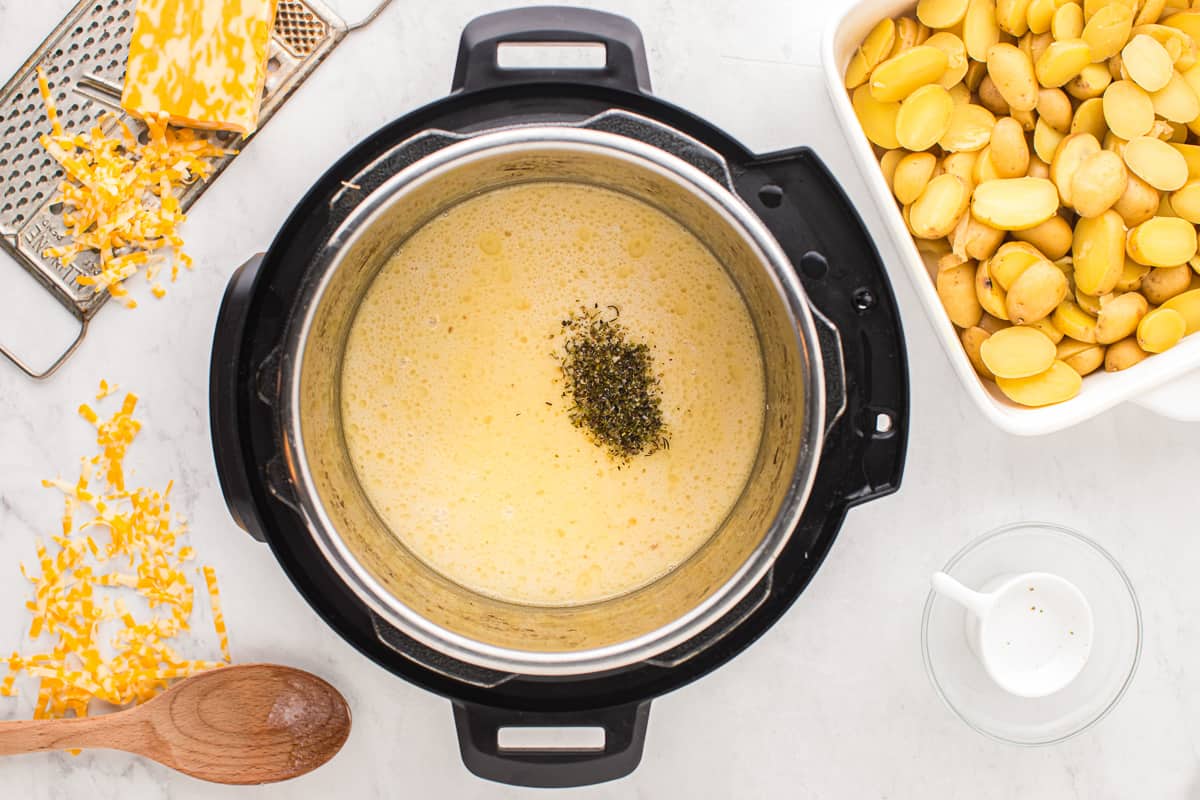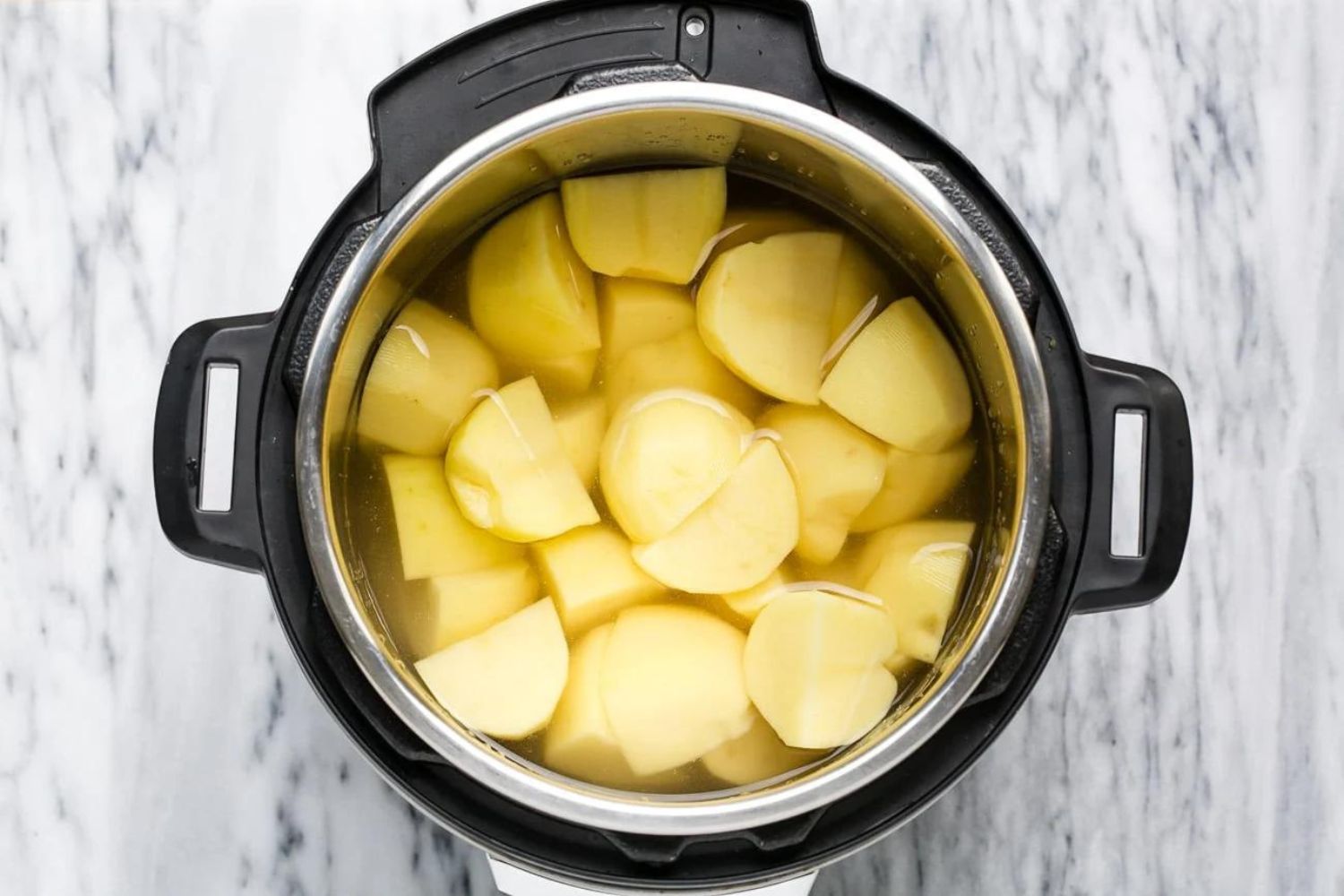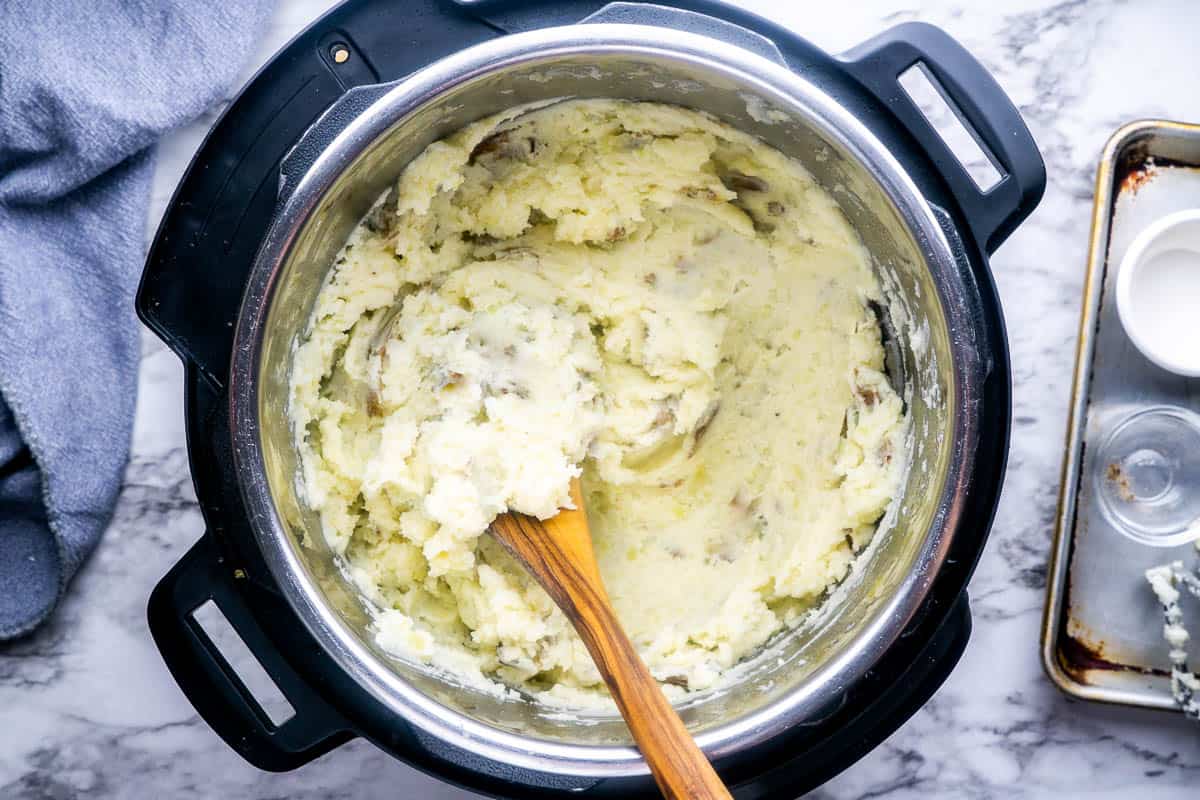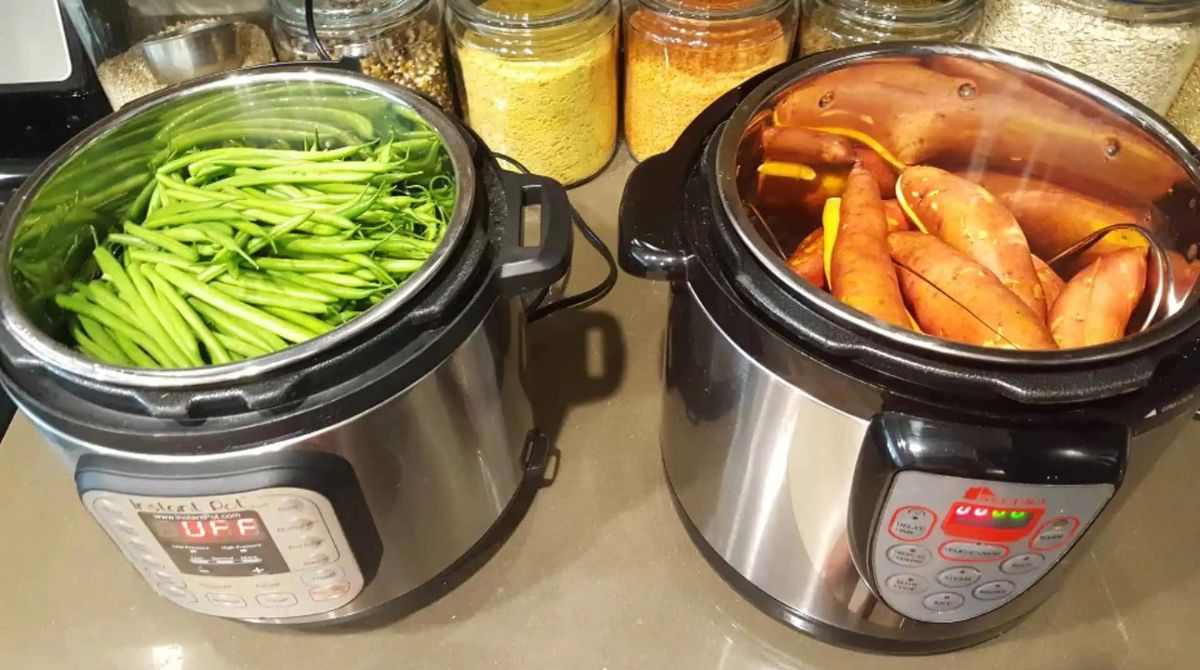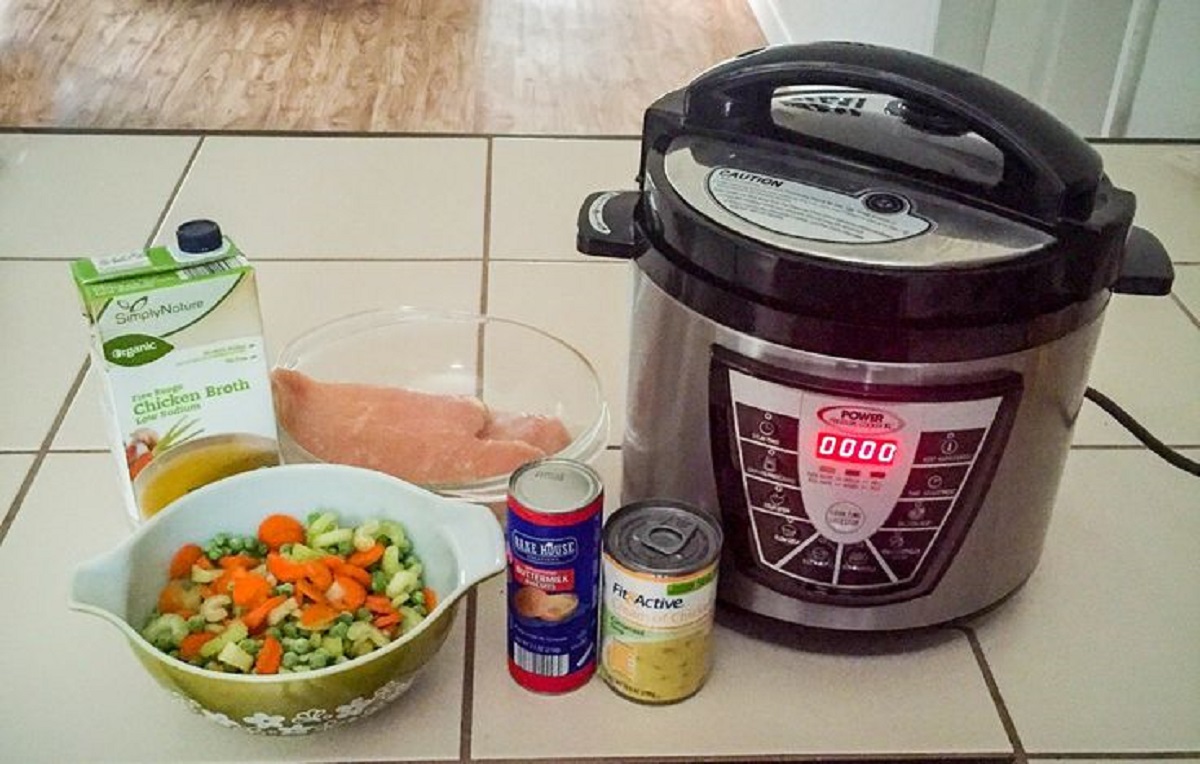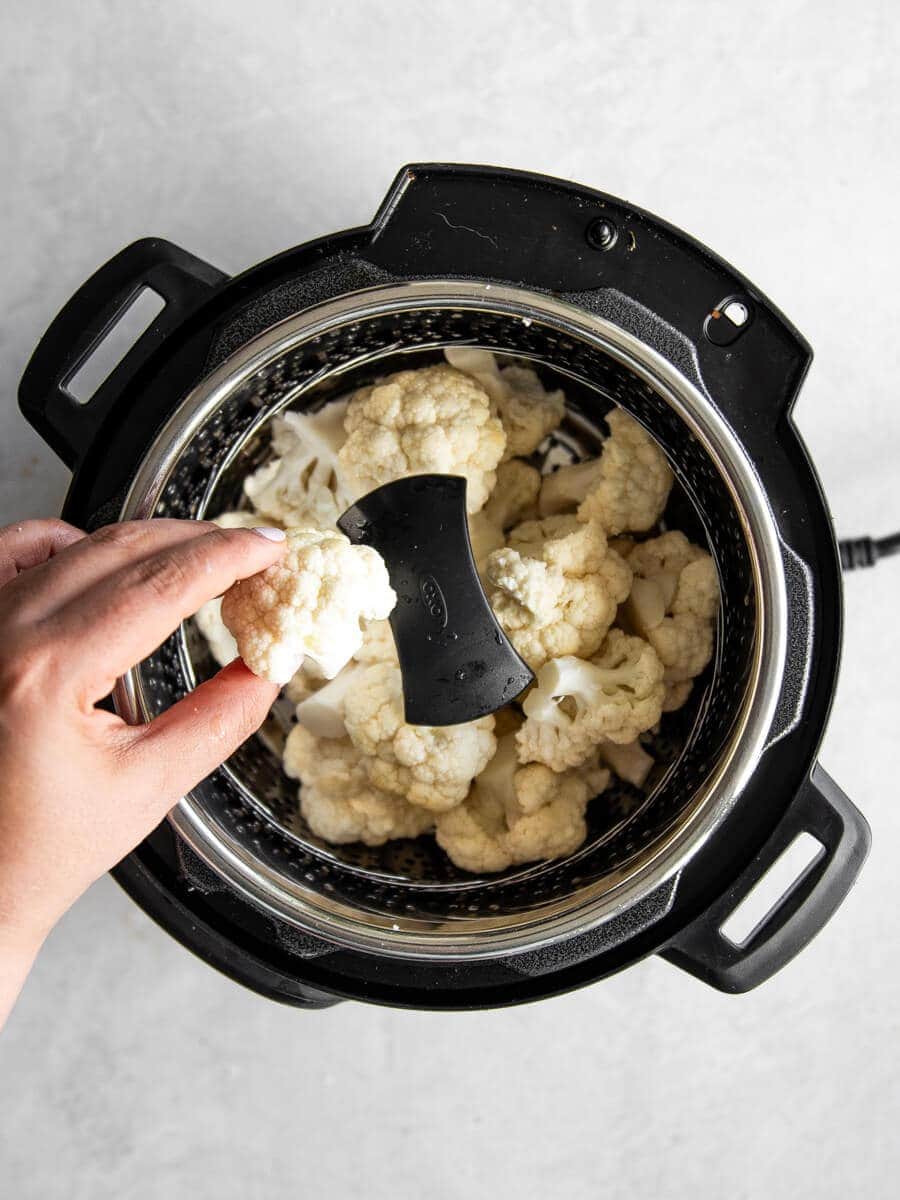Introduction
Welcome to the delicious world of baked potatoes! Whether you’re a fan of the classic fluffy russets or prefer the creaminess of Yukon Golds, there’s nothing quite like a perfectly baked potato. While the traditional method of baking in the oven can take up to an hour, using an electric pressure cooker can dramatically cut down the cooking time.
In this article, we will explore the benefits of using an electric pressure cooker for baking potatoes. We’ll also guide you through the process of choosing the right potatoes, preparing them for cooking, and adding delicious seasonings to enhance their flavor. Additionally, we’ll explain the different cooking methods and how to test for doneness. By the end of this article, you’ll be equipped with all the knowledge needed to make mouthwatering baked potatoes in your electric pressure cooker.
Why opt for an electric pressure cooker? Well, aside from the time-saving aspect, these modern cooking appliances offer a host of benefits. They use a sealed environment and steam to cook food quickly and evenly. This not only ensures consistent results but also helps to lock in the flavors and nutrients of the potatoes. Additionally, electric pressure cookers are versatile and can be used for various cooking methods, making them a valuable addition to any kitchen.
So, whether you’re preparing a family dinner, hosting a gathering with friends, or simply craving a hearty meal, using an electric pressure cooker to bake your potatoes is a game-changer. Say goodbye to long waiting times and hello to perfectly cooked, deliciously soft and fluffy baked potatoes in no time!
Benefits of using an electric pressure cooker for baked potatoes
When it comes to baking potatoes, using an electric pressure cooker has numerous advantages that make it worth considering. Let’s explore some of the key benefits:
- Time-saving: Traditional oven-baked potatoes can take up to an hour to cook, but with an electric pressure cooker, you can have perfectly cooked potatoes in a fraction of the time. The high-pressure environment of the cooker speeds up the cooking process, allowing you to enjoy your baked potatoes in as little as 15 minutes.
- Energy-efficient: Electric pressure cookers are designed to optimize energy usage by cooking food quickly and efficiently. Compared to traditional ovens, pressure cookers consume less energy, ultimately reducing your electricity bills.
- Consistent results: The sealed environment of the pressure cooker ensures that heat is evenly distributed, resulting in uniformly cooked potatoes. This means no more inconsistent cooking, where some potatoes are undercooked while others are overcooked.
- Retains nutrients and flavors: The steam cooking method employed by electric pressure cookers helps to retain the nutrients found in potatoes. Unlike boiling, where nutrients can leach out into the cooking water, pressure cooking keeps the vitamins and minerals locked within the potatoes. As a result, you can enjoy healthier and more flavorful baked potatoes.
- Versatile: Electric pressure cookers offer a wide range of cooking functions, allowing you to do more than just bake potatoes. You can use the cooker for various cooking methods, such as steaming vegetables, cooking stews, or even making homemade yogurt. It’s a versatile kitchen tool that can save space and streamline your cooking process.
The benefits of using an electric pressure cooker for baked potatoes are undeniable. From saving time and energy to achieving consistent results and preserving nutrients and flavors, it’s a practical and efficient way to cook this classic side dish. So why wait? Grab your electric pressure cooker and get ready to transform simple potatoes into sensational baked delights!
Choosing the right potatoes for baking
When it comes to making perfectly baked potatoes, choosing the right type of potato is crucial. While you can technically bake any type of potato, certain varieties are better suited for this cooking method. Let’s explore the popular potato types and their characteristics:
- Russet potatoes: Also known as Idaho potatoes, russets are the go-to choice for baking. They have a high starch content, which gives them a light and fluffy texture when cooked. Russets have a rough and thick skin that crisps up nicely during baking, making them the perfect choice for those who love a crispy skin.
- Yukon Gold potatoes: Known for their creamy texture and slightly sweet flavor, Yukon Golds are another great option for baking. They have a medium starch content, which results in a soft and buttery texture. These potatoes have a thin and smooth skin that doesn’t get as crispy as russets, but still adds a delightful taste and texture.
- Red potatoes: Red potatoes have a waxy texture and a buttery, slightly sweet flavor. While they are not as commonly used for baking, they can still be a delicious choice. Keep in mind that red potatoes tend to be denser and have a firmer texture even when baked. If you prefer a creamier and fluffier texture, you may want to opt for russets or Yukon Golds instead.
When selecting potatoes for baking, look for ones that are firm, smooth, and free of blemishes or soft spots. The size of the potato is also important – aim for medium-sized potatoes that are roughly the same size. This will ensure even cooking and prevent smaller potatoes from becoming overcooked while larger ones remain undercooked.
It’s worth noting that you can also experiment with other varieties, such as purple or fingerling potatoes, for a unique twist on traditional baked potatoes. Different potato types may require slight adjustments in cooking time and method, so don’t hesitate to try out different options to find your favorite.
Now that you’re armed with the knowledge of choosing the right potatoes, it’s time to move on to the next steps – preparing the potatoes and getting them ready for baking in your electric pressure cooker.
Preparing the potatoes for cooking
Before you can start cooking your potatoes, proper preparation is necessary to ensure they turn out perfectly. Here are the steps to follow when preparing your potatoes for baking in an electric pressure cooker:
- Wash the potatoes: Begin by thoroughly washing the potatoes under running water to remove any dirt or impurities on the surface. Use a scrub brush if necessary to scrub away any stubborn dirt. This step is essential for maintaining the taste and texture of the potatoes.
- Pierce the potatoes: Take a fork or a sharp knife and pierce each potato several times. This helps to release steam during the cooking process and prevents the potatoes from exploding in the pressure cooker. Make sure to pierce all sides of the potatoes evenly.
- Optional: Prick the skin: If you prefer softer skin on your baked potatoes, you can lightly prick the potato skin with a fork or a knife. This allows steam to escape, resulting in a softer skin texture. However, if you love crispy potato skins, you can skip this step.
- Trim any blemishes: Inspect the potatoes for any blemishes or soft spots. If you find any, use a small knife to carefully trim or cut out the affected areas. It’s essential to remove any damaged portions to ensure that the potatoes cook evenly and retain their quality.
- Leave the skin on: Unless you have a specific preference, it’s generally recommended to leave the skin on while baking potatoes in an electric pressure cooker. Not only does it add a nice texture and flavor, but it also helps to hold the potatoes together during the cooking process.
Once you’ve completed these steps, your potatoes are ready to be seasoned and placed in the electric pressure cooker. The preparation process may seem simple, but it sets the foundation for a delicious and well-cooked batch of baked potatoes.
Next, we’ll explore how to add seasonings to enhance the flavor of your baked potatoes in the electric pressure cooker.
Adding seasonings to enhance the flavor
While baked potatoes are delicious on their own, adding seasonings can take them to a whole new level. The electric pressure cooker provides a great opportunity to infuse your potatoes with mouthwatering flavors. Here are some ways to add seasonings and enhance the taste of your baked potatoes:
- Salt and pepper: A classic combination, salt, and pepper are the simplest way to enhance the natural flavors of the potatoes. Sprinkle a generous amount of salt and a dash of freshly ground pepper over the potatoes before cooking to bring out their taste.
- Garlic and herbs: Adding minced garlic or garlic powder to your potatoes can give them a savory and aromatic twist. Additionally, herbs like rosemary, thyme, or parsley can impart a pleasant fragrance and a burst of freshness. Simply sprinkle the minced garlic, herbs, or herb blends over the potatoes before cooking.
- Cheese: For cheese lovers, adding grated cheese on top of your baked potatoes is a surefire way to make them irresistible. Cheddar, Parmesan, or a melting cheese like mozzarella work well for this. Sprinkle the cheese over the cooked potatoes and let it melt for a cheesy and indulgent treat.
- Spicy kick: If you enjoy a bit of heat, consider adding some spice to your baked potatoes. Sprinkle cayenne pepper, chili powder, or paprika over the potatoes before cooking for a touch of spiciness. You can adjust the amount of spice according to your preference.
- Butter or olive oil: Adding a pat of butter or drizzling some olive oil over the potatoes before cooking can add richness and flavor. The fat helps to keep the potatoes moist and gives them a buttery taste. Be sure to distribute the butter or oil evenly over the potatoes.
- Customize to your taste: Feel free to experiment with various seasonings and flavor combinations to suit your preferences. You can try adding smoked paprika for a smoky flavor, dried herbs like oregano or thyme, or even a squeeze of lemon juice for a bright acidity. The possibilities are endless, so get creative and have fun with your seasoning choices.
Once you’ve added the desired seasonings, gently toss or rub the potatoes to ensure they’re coated evenly. This will help the flavors penetrate the potatoes during the cooking process. With the right seasonings, your baked potatoes will tantalize your taste buds and make every bite a delicious experience.
Now that we’ve covered the seasoning options, let’s move on to the next step – cooking the potatoes in an electric pressure cooker.
Cooking the potatoes in an electric pressure cooker
Now that your potatoes are prepared and seasoned, it’s time to cook them in your electric pressure cooker. Here’s a step-by-step guide on how to achieve perfectly cooked baked potatoes:
- Add liquid: Start by adding about 1 cup of water or vegetable broth to the bottom of the electric pressure cooker. This liquid is essential for creating the steam necessary to cook the potatoes.
- Place the potatoes: Gently place the seasoned potatoes into the pressure cooker, ensuring they are evenly spaced and not stacked on top of each other. It’s crucial to arrange the potatoes in a way that allows steam to circulate around them for even cooking.
- Secure the lid: Close the lid of the pressure cooker securely, following the manufacturer’s instructions. Make sure the vent valve is set to the sealing position to create a sealed cooking environment.
- Select the cooking mode: Set the pressure cooker to the manual or pressure cook mode and adjust the cooking time. For medium-sized potatoes, a cooking time of around 15-20 minutes on high pressure is usually sufficient. Adjust the cooking time shorter for smaller potatoes or longer for larger ones.
- Start the cooking process: Press the start button or program the pressure cooker to begin the cooking process. The pressure cooker will start building up pressure and cooking the potatoes. You may hear some hissing or releasing of steam, which is normal during the cooking process.
- Wait for natural or quick release: Once the cooking time is complete, you have two options for releasing the pressure. The natural release method involves allowing the pressure to release on its own gradually. This can take around 10-15 minutes. The quick-release method involves manually venting the steam by turning the vent valve to the venting position. Be cautious as the steam is very hot and can cause burns.
- Remove the potatoes: After releasing the pressure, carefully open the lid of the pressure cooker. Use tongs or a slotted spoon to remove the cooked potatoes, placing them on a serving dish or cutting board.
- Optional: Crisp the skin (optional): If you desire a crispy skin on your baked potatoes, you can transfer them to a baking sheet and place them under the broiler for a few minutes until the skin turns golden and crispy. Keep a close eye on them to prevent burning.
- Let them cool: Allow the potatoes to cool for a few minutes before serving. This will make them easier to handle and prevent any potential burns.
Once the potatoes are cooked and ready, you can serve them as is or add your favorite toppings and enjoy a delicious meal. Whether you prefer classic toppings like sour cream and chives or something more adventurous like bacon and cheese, the choice is yours.
Now that you know how to cook the potatoes, the next section will cover how to test their doneness and ensure they’re cooked to perfection.
Quick-release vs. natural-release method
When cooking potatoes in an electric pressure cooker, you have two methods for releasing the pressure: quick-release and natural-release. Each method has its own benefits and considerations. Let’s take a closer look at both:
Quick-release method:
The quick-release method involves manually venting the steam from the pressure cooker using the vent valve. It is a faster way to release pressure and allows you to open the cooker sooner. Here’s how to do it:
- Once the cooking time is complete, turn the vent valve from the sealing position to the venting position. This will allow steam to quickly escape from the pressure cooker.
- Be cautious as the steam is very hot. Keep your hands and face away from the vent to avoid burns.
- Once all the steam has been released and the float valve drops, it is safe to open the lid.
The quick-release method is ideal when you’re in a hurry or need to halt the cooking process immediately. It is particularly useful if you’re cooking vegetables alongside the potatoes and want to prevent them from overcooking.
Natural-release method:
The natural-release method involves allowing the pressure to naturally release on its own without manually venting it. It is a more gradual process that allows the pressure to slowly dissipate. Here’s what to do:
- Once the cooking time is complete, let the pressure cooker sit undisturbed. The pressure will naturally decrease over time.
- This process can take around 10-15 minutes. You’ll know the pressure has fully released when the float valve drops.
- Once the float valve drops, it’s safe to open the lid and remove the potatoes.
The natural-release method is recommended when you want the potatoes to continue cooking in residual heat or if the recipe specifies longer resting times. It can also be helpful for dishes that contain liquids or sauces that may splatter if quick-released.
Whether you choose the quick-release or natural-release method, always exercise caution and follow the manufacturer’s instructions for your specific electric pressure cooker model. Safety is paramount when handling hot steam and releasing pressure.
Now that you’re familiar with both methods, the next section will cover how to test the doneness of the baked potatoes.
Testing the doneness of the baked potatoes
Ensuring that your baked potatoes are cooked to perfection is essential for a delicious end result. Here are a few methods to test the doneness of your potatoes cooked in an electric pressure cooker:
Fork test:
The fork test is a simple and reliable way to check if your potatoes are fully cooked. Take a fork and gently insert it into the center of the potato. If the fork easily slides in and out with no resistance, the potato is done. If there is resistance or the fork meets any firmness in the center, the potato needs more cooking time.
Internal temperature:
Using a kitchen thermometer can provide an accurate measurement of the potato’s internal temperature. The ideal internal temperature for a perfectly baked potato is around 205°F (96°C). Insert the thermometer into the thickest part of the potato to get an accurate reading. If the temperature falls below the recommended range, continue cooking the potatoes for a few more minutes.
Squeeze test:
Another simple way to test the doneness is to gently squeeze the sides of the potato using oven mitts or a kitchen towel. If the potato feels soft and gives in to the pressure, it’s likely cooked through. However, if it feels firm and lacks a soft texture, it needs more cooking time.
Visual cues:
Pay attention to the visual cues of the potatoes. Cooked potatoes will have a fluffy and light texture on the inside. The skin should be golden brown and slightly crisp, adding a pleasant texture contrast. If the potatoes appear pale and undercooked, they need more time in the electric pressure cooker.
Remember that cooking times may vary depending on the size and thickness of the potatoes, as well as the individual pressure cooker model. If the potatoes aren’t yet done, simply reseal the pressure cooker and continue cooking for an additional few minutes.
Once the potatoes pass the doneness tests, they are ready to be served and enjoyed! Whether you’re serving them as a side dish or as a base for a loaded potato creation, your perfectly cooked baked potatoes are sure to be a hit.
The last section will conclude the article and tie all the information together.
Serving and enjoying your perfectly cooked baked potatoes
Now that you have achieved perfectly cooked baked potatoes, it’s time to serve them up and enjoy the flavorful results. Here are some tips for serving and enhancing your delicious potatoes:
Toppings and garnishes:
Baked potatoes are incredibly versatile and can be customized with a variety of toppings and garnishes. Classic options include sour cream, chives, butter, and grated cheese. You can also add crumbled bacon, chopped green onions, salsa, or guacamole for a more indulgent twist. Get creative and let your taste buds guide you when choosing toppings.
Serving suggestions:
Baked potatoes can be enjoyed as a side dish or as a main course. Serve them alongside grilled meats, roasted vegetables, or a fresh salad for a well-rounded meal. They can also be the star of the show when loaded with toppings and served as a standalone meal. Consider pairing your baked potatoes with a refreshing beverage like iced tea, lemonade, or a crisp white wine to complete the dining experience.
Leftover ideas:
If you have leftover baked potatoes, don’t let them go to waste. They can be repurposed into delicious meals. Use them as a base for potato skins by adding cheese and bacon, then broiling them until golden and bubbly. You can also slice them and pan-fry them for crispy potato hash browns, or mash them up with butter and milk for fluffy mashed potatoes. The possibilities are endless, so get creative with your leftovers.
Storing leftovers:
If you have leftover baked potatoes that you’d like to enjoy later, store them in an airtight container in the refrigerator. They can be reheated in the microwave, oven, or even on a stovetop for a quick and satisfying meal. However, keep in mind that reheated potatoes may have a slightly different texture than when freshly baked.
Remember to savor the mouthwatering flavors and enjoy the tender and fluffy texture of your perfectly cooked baked potatoes. The electric pressure cooker has made the process quick and convenient, allowing you to serve up this comforting dish in no time.
In this article, we explored the benefits of using an electric pressure cooker for baking potatoes, discussed how to choose the right potatoes, and went through the preparation, seasoning, cooking, and testing process. Now, armed with this knowledge, you are ready to create delicious baked potatoes that will impress your friends and family.
So, roll up your sleeves, fire up your electric pressure cooker, and get ready to experience the joy of perfectly cooked baked potatoes!
Conclusion
In conclusion, using an electric pressure cooker to bake potatoes offers a range of benefits, including time-saving convenience, energy efficiency, and consistent results. By choosing the right type of potato, such as russets or Yukon Golds, you can achieve the desired texture and flavor for your baked potatoes.
Preparing the potatoes involves washing, piercing, and potentially pricking the skin, while leaving it on to add a delicious texture. Adding seasonings, such as salt, pepper, garlic, herbs, cheeses, or even spices, enhances the flavor profile of the potatoes and allows for customization to personal tastes.
Cooking the potatoes in an electric pressure cooker requires adding liquid, placing the seasoned potatoes inside, and selecting the appropriate cooking mode. You can either use the quick-release method to rapidly release pressure or opt for the natural-release method for a slower release. Testing the doneness of the baked potatoes through fork or thermometer tests ensures they are properly cooked before serving.
Serving the perfectly cooked baked potatoes can be done alongside various toppings and garnishes, thereby offering a versatile and customizable dish. Additionally, any leftover potatoes can be repurposed into delicious meals or stored for future enjoyment.
By following these steps and guidelines, you can confidently create outstanding baked potatoes using your electric pressure cooker. So, embrace the convenience, savor the flavors, and experience the delight of perfectly cooked baked potatoes in the comfort of your own kitchen.







